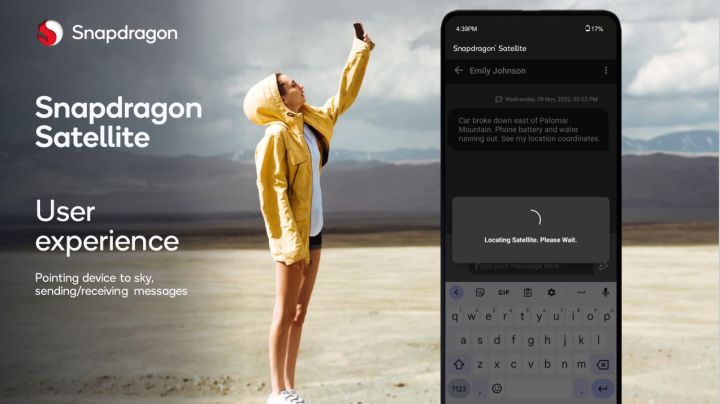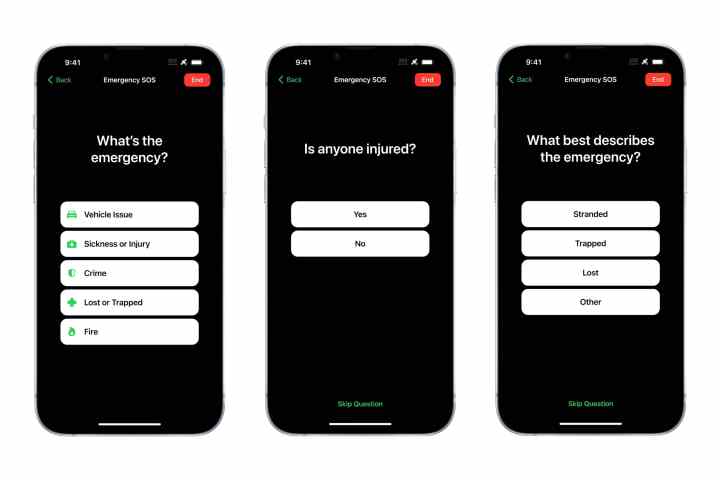
It could take a while before Android phones allow satellite connectivity to assist users in emergency scenarios, thanks in no part to Qualcomm canceling its ambitious Snapdragon Satellite plans. Apple introduced satellite SOS support last year with the iPhone 14 series, with the intention of helping people when they are out of cellular or broadband coverage range.
The feature allows you to text emergency responders, share locations, and request roadside assistance. But not long after, hope emerged for Android phones. Earlier this year, Qualcomm announced Snapdragon Satellite, with the goal of aping Apple’s initiative for Android phones.

Qualcomm said it would be the “world’s first satellite-based two-way capable messaging solution,” even though the company hinted that it would be exclusive to high-end phones only. The satellite connection facility was baked at a hardware level on phones powered by the Snapdragon 8 Gen 2 chip using the onboard Snapdragon 5G Modem-RF Systems.
Virginia-based Iridium handled the satellite infrastructure as Qualcomm’s chosen partner. The chipmaker said satellite-based emergency messaging would appear on phones in 2023. That didn’t happen, and unfortunately, the chances of Qualcomm playing a role in bringing satellite connectivity to Android phones in 2024 appear slimmer.
That’s because Qualcomm has nixed the Snapdragon Satellite project. “Qualcomm notified Iridium that it has elected to terminate the agreements, effective December 3, 2023,” Iridium wrote in a press release. The reason behind the deal falling apart was that smartphone makers simply did not implement the technology provided by Qualcomm into their smartphones.

Apple isn’t the only one offering satellite connectivity service on smartphones, and the world of Android isn’t entirely alien to it, either. Bullit Group’s Cat S75 is an Android device that offers direct-to-satellite communication perk. But unlike Apple’s emergency-only approach, Bullit also lets you send messages to any person in your contacts list.
In the Cat S75’s case, it’s not Qualcomm, but MediaTek that is facilitating satellite connectivity courtesy of its NTN (Non-Terrestrial Networks) chip. Of course, satellite connectivity is not free. The Essential plan costs 5 euros and allows 30 messages per month, while the 30 euro plan bumps that number to 400 messages.
Motorola also tapped Bullit Group for the Motorola Defy Satellite Link, a Bluetooth-based puck that allows any smartphone to send and receive texts over a satellite link. The IP68-rated rugged device also lets a person tap the dedicated SOS button to call for emergency assistance without pairing their phone.
Why Snapdragon Satellite failed

But why did Qualcomm’s plans die? Consumer technology analyst Avi Greengart wrote on X, formerly Twitter, that Android smartphone makers weren’t keen on a proprietary solution to the phone-satellite facility. But that’s exactly what Qualcomm was offering. The smartphone brands were looking for a standards-based solution that gave them more leverage in their partnerships with satellite service providers like Iridium.
“Apple is doing Emergency SOS via Satellite on its own, and if it does start charging after two years, it owns an extensive services platform with hundreds of millions of accounts for billing. Most smartphone vendors don’t have this capability. Wireless carriers have billing relationships with their customers, so they would be a natural choice to act as middlemen,” Greengart tells Digital Trends.
Talking about carriers, it’s still a work in progress. Elon Musk-led SpaceX joined hands with T-Mobile last year, announcing that the Magenta carrier’s customers will be able to tap the Starlink satellite network without any special hardware attached to their phones. Beta-testing of the service was supposed to begin later in 2023.
The next step for satellite on Android

SpaceX says it will allow a satellite-based texting facility next year, while voice calling and internet browsing functionality will go live in 2025. T-Mobile plans to utilize its mid-band spectrum to establish a new broadcast network that will be connected to Starlink satellites fitted with the specialized eNodeB modem that essentially works like a cell tower in space.
Notably, SpaceX has also inked similar deals with carriers in multiple countries —including Australia, Canada, Japan, New Zealand, and Switzerland. AST SpaceMobile is also eyeing the “cellular broadband directly to your phone” facility. Last month, AST Space Mobile – in partnership with Vodafone – successfully managed the world’s first 5G voice call over a satellite network and achieved a downlink speed of 14 Mbps on a cellular broadband link.

Amazon is lending a hand to Vodafone in extending its 4G and 5G services in Africa with a high-bandwidth, low-latency satellite network provided by the Project Kuiper constellation. Verizon also has a similar deal in place to exploit Amazon’s low-earth orbit (LEO) satellites. Indian behemoth Jio has started testing satellite-based gigabit internet service across multiple locations.
Where do we go from here?

It is becoming clear that satellite service providers (like SpaceX and Amazon) and carriers will play a key role in bringing satellite connectivity to phones, and not just chipmakers like Qualcomm hawking custom hardware. It’s unlikely that Qualcomm was absorbing the cost of its Snapdragon Satellite modem hardware, which means the smartphone brands had to pay a higher price for the proprietary tech.
Instead, smartphone companies are looking at a standards-based approach where they could get more negotiation flexibility by talking directly with carriers and satellite operators. But how far are we from a future where the likes of AST SpaceMobile – which is already working with T-Mobile and a bunch of their global carriers – can widely extend their satellite-to-phone 5G services?
“AST SpaceMobile needs about two dozen satellites for coverage in key geographies, and 90 to offer global coverage. Currently, it has two in orbit. It is prepping five for launch early next year,” Greengart tells DigitalTrends. “I would expect small trials to start then if the launch goes well, but I don’t expect full service before 2025, and that depends on a lot of things going its way.”
A deeper dive into Qualcomm’s Snapdragon Satellite hiccup and the overall status of the industry is available in a report at Techsponential, a firm where Greengart serves as the President.
Editors’ Recommendations